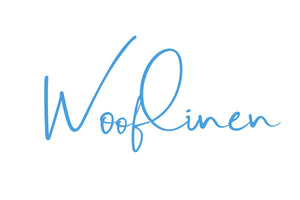Just in case you are stuck on what Viscose is, let us once again refer you to this write-up. Now that we have that cleared up, let’s jump into why Bamboo bedding us such a wonderful Silk bedding substitute.
Price: Silk is (insanely) expensive to produce. We originally thought that our French Linen was the most expensive to produce material out there. Not true. We did a short stint of R&D with silk, and you know what we discovered? A single pillow case of silk costs almost as much to produce as a bamboo sheet set. Plus, Rosie is afraid of small outdoor creatures. So the whole idea didn’t work. Bamboo? We have bamboo growing in our own yard and, know what we discovered? The stuff is a weed. Beautiful, but must be maintained. This is a hardy, fast growing plant. Therefore, bamboo provides a wonderful silk-like alternative, but at half the price.
Eco-Friendly: Yes, silk is clearly eco-friendly because it comes from a natural source; typically the mulberry silkworm in Asia. It just so happens that our bamboo also grows in Asia, and it grows like a weed. The bamboo does not require irrigation, is happy in an array of dirt, does not require pesticides, and grows like a weed. Just how fast? Some species of bamboo can grow three feet in a day. It’s pretty incredible to watch… if you have the time for that.
Silky Sheen: Bamboo has a number of weaves, but sateen is by far the most popular. Not only does the Sateen give a silk-like appearance, bamboo benefits from a little bit of versatality. Case in point, the Wooflinen team are not the biggest fans of the sheen sateen makes. Especially on cotton. But a lot of our customers just love the sateen sheen, especially since it makes the sheets look like pure silk. Hoping for a sheet set that looks more matte? More bamboo magic. If you are hoping to maintain the sheen, the key is to wash in cold water and never dry in a temperature higher than warm.
But! If you want to expedite into a more matte look, we are going to give a quick tip. While we do not recommend washing bamboo sheets on the HOT setting, there are a couple special circumstances. The first circumstance is for resistant oil stains. Sometimes they need to feel the heat. The other circumstance, is to dial back the sheen. A few hot washes of our Bamboo sheets will accelerate their appearance from a sheen white, to a matte white. It’s like a fabric transformer! But without the action figure trademark.
Durability: Bamboo absolutely crushes Silk in regards to durability. We discovered that after a few ill-advised washes of our silk, our silk no longer looked like silk at all. Looked more like an old, withered fabric. Terrifying, considering how much the material costs. Bamboo, on the other hand, goes head to head with the most quality cottons in regards to durability. Which is good news, considering most our customers own HE washers and dryers. These devices just love to beat up on anything placed inside them. Therefore, if you don’t want a product-care headache, go for bamboo.
Hopefully this sums up the differences between bamboo and silk bedding, and why you should save your money and purchase Wooflinen Bamboo Bedding. 🙂
But, if that money is really burning a hole in your pocket, let us put you in touch with some wonderful foster networks who could definitely use your support. Buying the most comfortable sheets while also donating to a rescue group? Can’t imagine a better night of sleep.
